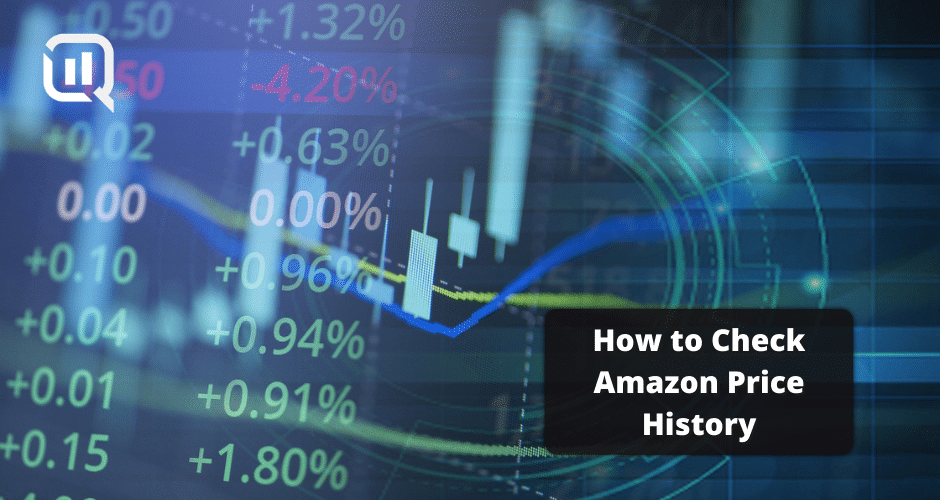When selling a product, one of the most important factors is making sure it’s priced appropriately; low enough that someone will buy it, but high enough that you make a profit. The price must also be competitive, but not overly so to turn off consumers. With thousands of products and competitors to compete with and compare to, manually determining the appropriate pricing for your products can almost be impossible. Price tracker tools can help automate this work and provide critical pricing and insights data to make your life easier and increase your profits. Read on to learn more, including how to check Amazon price history.
What Is a Price Tracker?
A price tacker is a tool used to monitor price changes on Amazon, comparing and analyzing product prices to help sellers appropriately list their products. Generally, the tool price checks Amazon products and notifies a seller if the price of a particular product goes up or down, and it also monitors product pricing history.
Using a price tracker allows sellers to be more in control of their product. Buyers can also use a price tracker to have more control over their purchases.
Benefits Of Price Trackers
Price tracking tools help both buyers and businesses:
- Buyers are able to compare prices to make the best and most informed decision.
- Sellers can:
- Track changes on the market and adjust their own price levels accordingly.
- Instantly reprice products according to market levels.
- Rank higher in search results.
- Have a greater return on investment (ROI).
Price trackers can help sellers select the right price by comparing it to similar products and ensures they can stay on top of the competition by timely modifying price levels.
- Retailers can:
- Save time – the tool automatically maps the market and allows for adjusting of price levels.
- Grow margins by learning where and when to increase or decrease prices.
- Monitor competitor stock, costs, and margins easily.
Using a price tracker also helps retailers sell more products and increase profits because they are setting the right consumer prices.
- Manufacturers can:
- Control minimum advertised pricing.
- Set right market prices for each product.
- Avoid lowering prices for a brand too much.
Why Is It Important to Check Amazon Price History?
Amazon prices change constantly. Knowing the price history can help give you an edge in finding good deals – you can see how the prices have increased and decreased over time and purchase when you know it’s a low price.
Or, if you have your own products you’re selling, it can help you determine your pricing strategy. You don’t want to price too high that you can’t sell, or too low that you’re not able to make a profit. It can also help you determine seasonal trends and popularity/demand of a product.
Tools to View Amazon Price Changes
One of the top tools for Amazon pricing is Camelcamelcamel, which comes in both website and browser extension forms.
- Website:
- Allows you to track sales and price drops of any product over the course of its existence on Amazon.
- Designates “good deal” and “best price” conditions for each listing based on history.
- Gives the ability to set up price drop alerts so you get notifications by email when a price drops below specific price.
All you have to do is copy and paste the listing’s URL into camelcamelcamel’s search bar and hit enter. This brings up a chart tracking the price over time. You can adjust the duration shown, add and compare third party prices, or remove extreme price changes. Additional data shows highest, lowest, and most average prices.
- Browser extension:
There’s also a browser add-on called the Camelizer (operates on Chrome, Firefox, Edge, Brave, Safari, Opera). When you’re viewing a product on Amazon, you can click the Camelizer button on the browser’s toolbar to instantly see the price history. You can also sign up for price drop alerts in the extension window.
However, Camelcamelcamel is a free tool so it may be limited by what it offers.
QL2 has created a price monitoring product to help identify price gaps and opportunities via our Opti Price tool. This tool:
- Saves time.
- Aligns match definitions across teams.
- Creates matches with competitor site data.
- Helps you maximize sales and profitability.
Some insight you have access to include:
- Price change/competitive variance insights.
- Competitor, category, brand, and individual product level insights.
- Pricing and inventory trend insights.
- Historic trends.
- Natural language summaries/insights.
Automated insights include changes in market rank, market level price changes, and changes in overall market competitive position. You’ll also get anomaly and outlier detection, regional price performance, and detailed product-level performance, making pricing your products and making a profit faster and easier.
How to Choose a Price Tracker
An ideal price tracker should have features like:
- Unlimited number of ASINs (so you can add as many as you want to monitor price history).
- Detailed competitor overviews to ensure your product is positioned correctly against the competition.
- Long price history for in-depth analysis.
- Easy-to-read and understand charts.
- Price alerts and notifications so you can immediately take action.
- The possibility to track product details.
Use Data to Make Business Decisions
QL2 can help you gather the data you need to make real-time decisions, provide pricing and product insights, identify gaps and opportunities to maximize profit, match competitor comparables, and more. Get competitive intelligence for your specific needs – contact us today or schedule a demo to learn more.
